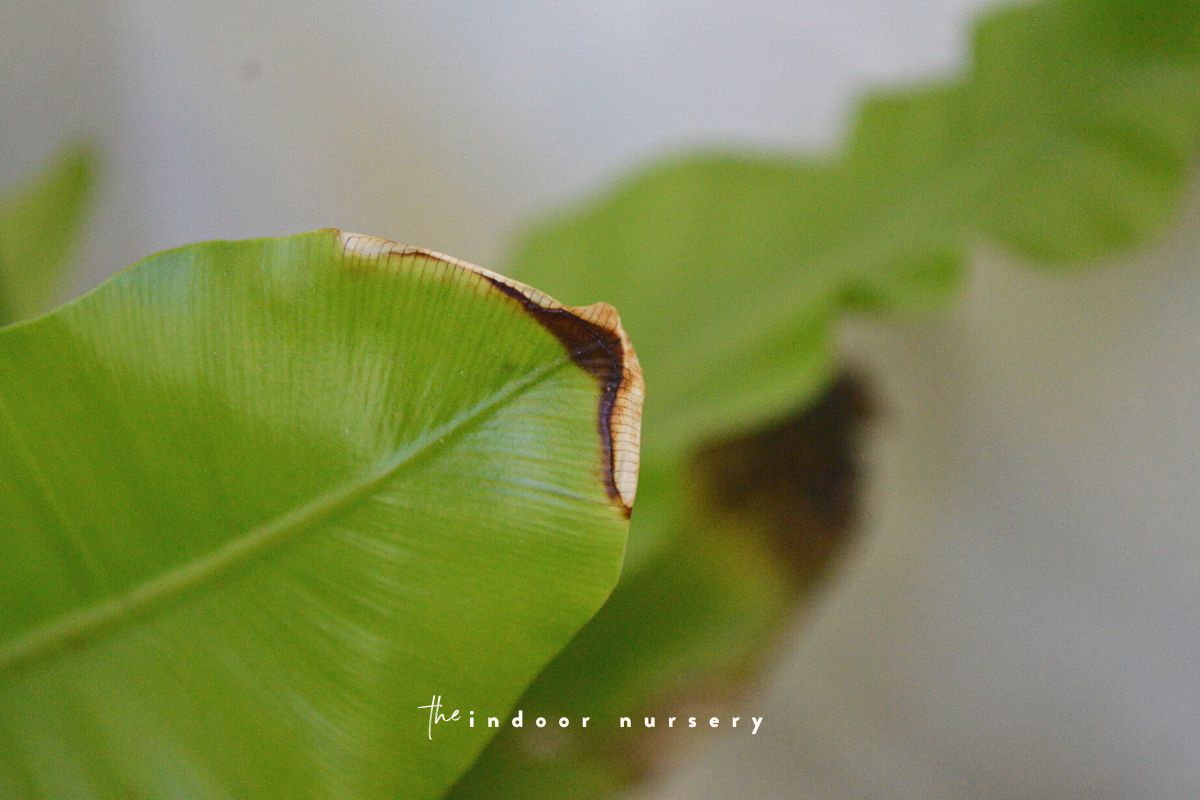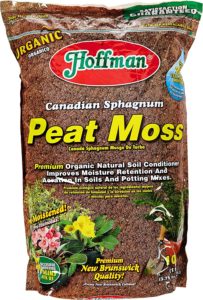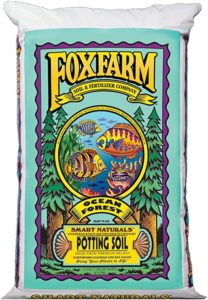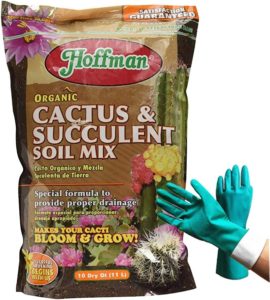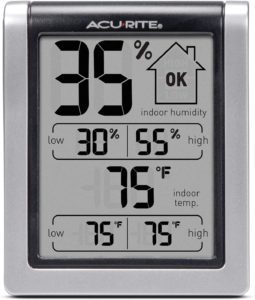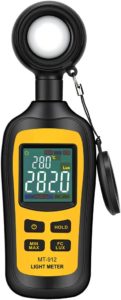I know exactly how devastating it can be to watch your green and perky bird’s nest fern develop brown tips. As a frequent traveler who has yet to figure out a good watering schedule for my fern, I usually come home to a bird’s nest fern with brown tips. Unfortunately, the tips of the leaves may turn brown due to various reasons.
The important thing to understand about a bird’s nest fern is that they come from a moist environment, usually settled in the nooks and crannies of tall trees at the tops of large canopies. They’re accustomed to consistent moisture levels and constant drainage as their roots cling onto the surfaces of trees.
The better you can mimic this environment, the happier your little fern will be.
But none of us live in a damp forest (yet) so let’s look at the ways that we accidentally fail to replicate this environment for our little ferns.
First, why is your bird’s nest fern turning brown?
Before we jump into things, we need to get our hands dirty. We need to assess exactly why your bird’s nest has brown leaf tips.
While there are many reasons why foliage turns brown, you’ll likely have an idea of what the cause is in your home.
In my case, I’m in a dry climate and go on vacation often. I suspect my fern is thirsty, inside and out.
As for you, you’ll need to consider three general reasons why leaves turn brown. Here’s how to check if this is relevant to you:
- First, check the amount of water you’re giving your plant. Too much or too little water can cause brown tips. Use a moisture meter to check the soil moisture levels.
- Second, make sure your plant is getting enough light. If it’s not, move it to a brighter spot. Watch the plant for a full day to see what kind of sunlight it is receiving. You could also measure light with a PAR meter; look for a range around 3,000 lux (300 fc).
- Third, check for pests. The most common pests are scale, mealybugs, and soil mites.
Here are some common causes of brown tips and edges on bird’s nest ferns and tips on how to fix them.
Underwatering
The most common cause of brown tips on bird’s nest ferns is underwatering. The leaves will start to turn brown from the tips and work their way down the leaf, first along the edges. If you see brown edges or tips, check the moisture of the soil. If it is dry, water the plant thoroughly.
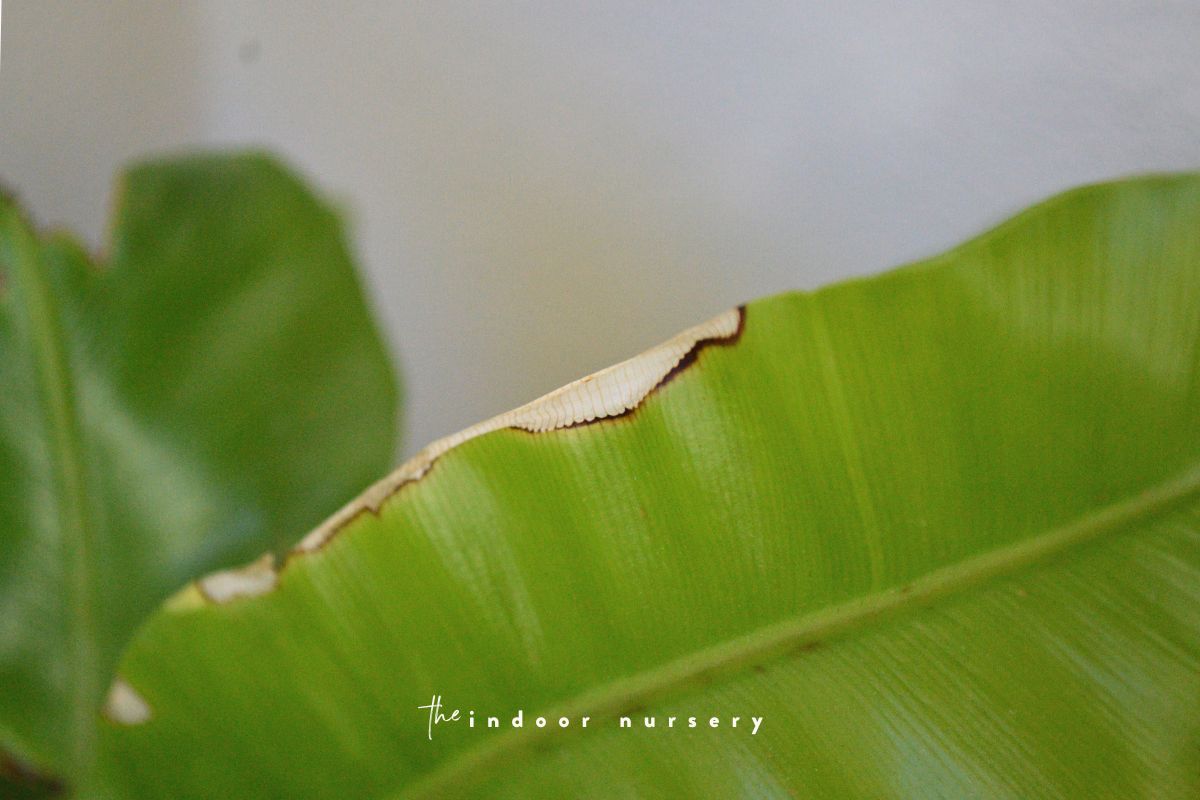
The best way to water a bird’s nest fern is to soak the pot in a basin of water for 15-20 minutes (AKA bottom watering), then drain away any water that remains in the pot. Allow the pot to dry out somewhat between waterings.
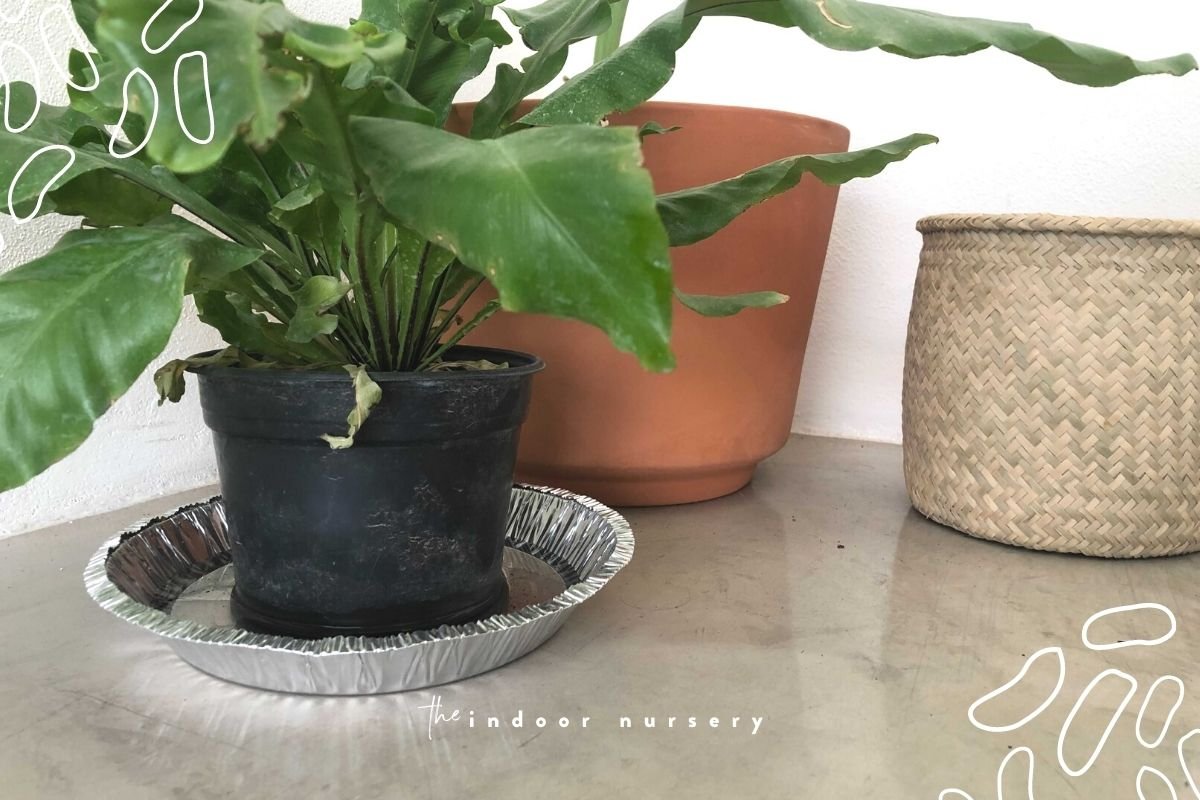
If you live in a very dry climate, you may need to water your bird’s nest fern more frequently. In very humid climates, you may need to water less often.
Overwatering & poor drainage
Too much water can also cause the tips of the leaves to turn brown. The leaves will start to brown from the bottom and work their way up. If you think your plant is being overwatered, check the drainage and make sure the plant is not sitting in excess water. If you notice the leaves are brown and soggy, this is a sign of overwatering. You may also need to adjust your watering schedule.
Even if you’re not watering that frequently, your soil may retain more moisture than the plant needs. If the soil doesn’t drain well, the roots can’t get the oxygen they need and the plant will start to suffocate (AKA root rot). The leaves will turn brown and wilt. The best solution is to transplant the plant into a pot with potting soil that allows better drainage.
I like a combo of peat moss (maintain moisture levels), Fox Farm potting mix (high nutrient levels), and succulent potting mix (for proper drainage).
Poor water quality
Another reason why I came home to yellowish leaves with brown tips from my last vacation is that I set up an automatic drip irrigation system that used plain tap water… in Mexico. The tap water here isn’t exactly clean and we suffered a few casualties this way. Always, always use filtered water when watering your plants.
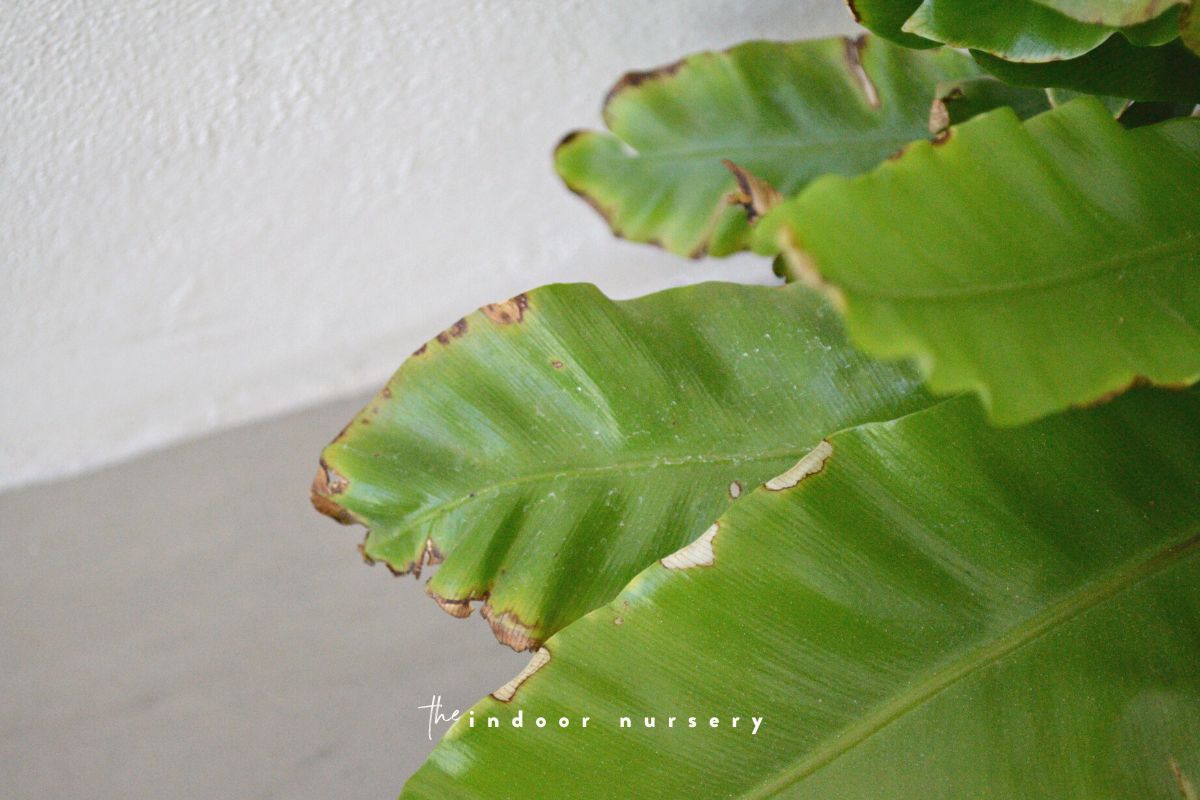
Root bound
If the plant is root bound, the roots are wrapping around the pot and the plant can’t take up enough water. The leaves will start to turn brown and wilt. The best solution is to transplant the plant into a larger pot. Use the soil mix above for your new pot.
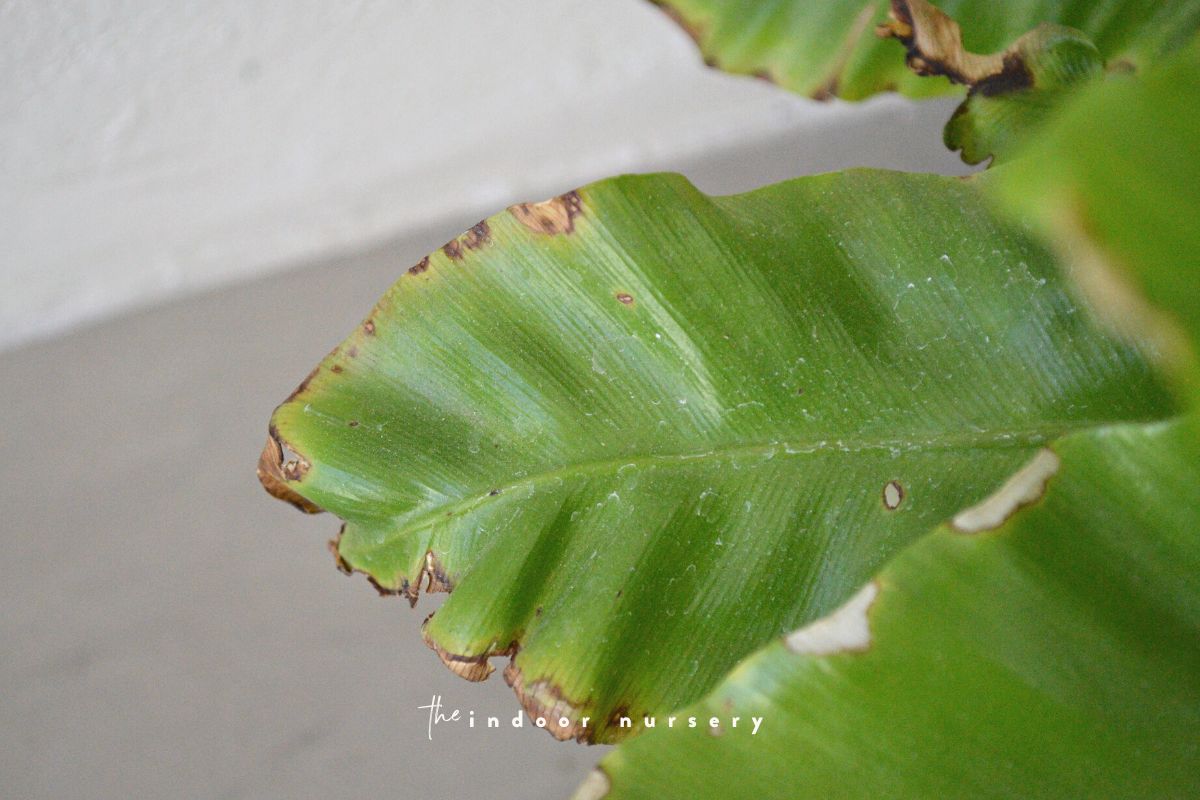
Poor temp & humidity conditions
These fern plants grow in high humidity areas year round naturally and so will thrive in a similar environment. If you’re in a dry area, then you may need to increase humidity. If you’re in a humid area (looking at you, Miami), then you may need better ventilation. To check your humidity levels, I recommend using a humidity meter.
If the problem is too much humidity, you can try moving the plant to a drier location or adding a fan to circulate the air. If the problem is too much heat, you can try moving the plant to a cooler location.
If the problem is lack of humidity, mist the leaves regularly or set the pot on top of a tray of pebbles. Here are a few things you can do to increase the humidity around your bird’s nest fern:
- Group your plants together.
- Place the pot on a tray of pebbles and water.
- Mist the leaves regularly.
- Use a humidifier.
Too much fertilizer
Too much fertilizer can also cause brown tips. If you have fertilizer that is high in nitrogen, this can cause the tips of the leaves to turn brown. The leaves will start to turn brown from the tips and work their way down the leaf. If you see brown tips, check the fertilizer and make sure it is not too high in nitrogen. You may also need to adjust your fertilizing schedule.
Poor light conditions
Remember that the birds nest fern sits at the top of large canopies, shaded by the branches and leaves of the forest but high above any other plants that might block the light.
In plainer terms: they like bright indirect light.
Too much light can be harsh for these ferns, so it’s best to keep them out of direct sunlight. This does not mean that they like full shade, though. They more like the goldilocks conditions when it comes to lighting and prefer filtered bright light. Look for a spot with bright light but that never feels the wrath of the full sun.
Take a look at where you fern is located and see if it is getting too much light throughout the day. Or maybe it’s too far away from any bright light at all and could be moved closer to a window (out of direct light).
Pests & diseases
Pests and diseases can also cause the tips of the leaves to turn brown. If you see brown tips, check the plant for pests and diseases.
- If you see small holes in the leaves or brown spots, your plant may have pests. The best way to get rid of pests is to treat the plant with an insecticidal soap or neem oil. You can also try making a homemade pesticide. If you see any pests, remove them and treat the plant with an insecticide.
- If you see brown spots or streaks on the leaves, your plant may have a disease. If you see any diseases, treat the plant with a fungicide.
More about watering plants
- How Often To Water Dracaena (Including Snake Plants)
- How to Use Leca for Plants: Step-by-Step Guide with Pictures
- How To Save An Overwatered Snake Plant
- How Often To Water Pothos Plants (And When To Cut Back)
- How Often To Water Monstera Plants
- 11 Plants That Don’t Need Drainage And How To Care For Them
- Save Your Overwatered Monstera In 4 Steps (And How Not To Do It Again)

